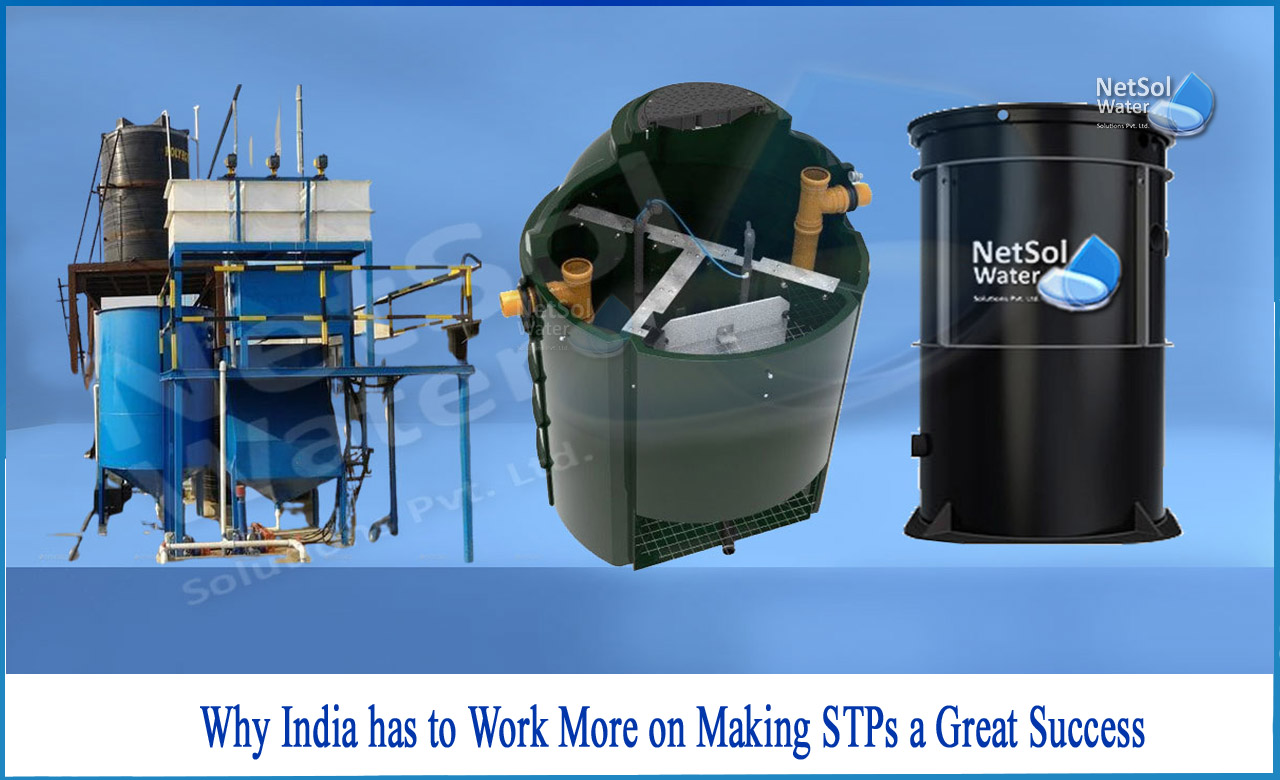Why India has to work more on making STPs a great success?
Wastewater treatment plants are a costly business. CPCB estimates that the traditional cost of STP is Rs 1 billion per million litres (MLD) per day.
This means that a sewage treatment facility capable of treating 300 million litres of wastewater will require the establishment of 300 crore rupees. Additional costs associated with STP installation include power supply, generator installation, and staff recruitment. As a result, many sewage treatment plants reduce their wastewater treatment capacity and eventually fail due to insufficient funding.
What could be the appropriate solution?
STP is a costly business and can only be maintained if a comprehensive financial structure is available for maintenance. STP should be fully functional in all sections of wastewater treatment. This is only possible if all costs such as electricity and labour costs are incurred on a regular basis. Otherwise, STP will be closed on a regular basis.
To address the cost of setting up and maintaining the STP, the federal government is currently taking specific steps to prevent at least new and future STPs from being involved in the financial crisis. To ensure this, the federal government is currently pushing for the establishment of most STPs based on a public-private partnership (PPP) model, and the costs are not unique to the state.
Insufficient power
STP requires continuous power to function properly. Electricity continues to be a major barrier to STP, as irregular power sources affect the amount of wastewater that is treated on a regular basis. An STP with a processing capacity of more than 200 MLD requires a 1 MW power supply.
In India, where more than 50 million households do not yet have access to electricity, a continuous supply of STP with an output of 1 MW is a major task.
A CPCB survey of 84 STPs in 2010 found that only eight of them were continuously powered. The rest had to rely on power for 12, 14 or 18 hours a day. Also, for most STPs observed during this study, no alternative power source was available, as only 12 STPs had alternative power sources such as generators. The STPs in Uttar Pradesh, Bihar and Delhi were the worst STPs with sufficient power.
Irregular power supply causes serious damage to the STP due to frequent interruptions in the wastewater treatment mechanism. This leads to inadequate wastewater treatment and affects the ratio of wastewater to wastewater per day. In 2014, more than 300 STPs were not continuously powered. This shows the status of STP in India.
What can be the solution?
Power supply is a big challenge. To reduce the reliance on externally supplied power, STP is currently being developed to generate sufficient power from treated wastewater to maintain its functionality. The 19 billion rupee STP project in Nagpur, which went into operation in December 2015, was India's first STP to generate electricity from treated wastewater. Bangalore followed in May 2017 when the Koramangala Challaghatta sewage treatment plant with a biogas engine and an output of 1 MW was opened. From a financial perspective, STP, which produces electricity from wastewater, is beneficial because it can sell electricity to each state government and earn enough income to cover the cost of maintaining the STP.
Outdated Infrastructure and Lack of Knowledge
CPCB Report 2015-16 estimates that nearly 50% of working STPs have outdated infrastructure. At four sewage treatment plants in Kanpur, decades-old machines were used for wastewater treatment, and it was found that the treated wastewater did not make a big difference in terms of pollutants. Installed in Uttar Pradesh, Bihar, Delhi, and West Bengal before 2000, the STP was pathetic due to its old infrastructure and inoperability. Some of the most common problems seen with STP 10-15 years ago were small expansion tanks, inadequate ventilation, and old purification equipment that resulted in more wastewater inflow than STP could handle. These serious problems often lead to the closure of STP.
Another problem identified by waste management experts is the lack of personnel in India's sewage treatment plants, hiring people who do not have the necessary skills for wastewater management and treatment. This is often due to the agency responsible for the operation and management of STP. Most of these institutions employ people who have no experience in managing STP and do not have the necessary skills and training to deal with STP-related issues.
The reluctance of state governments to invest more money to maintain STP plays a major role for institutions that have contracts to maintain STP. Most of these rely on fees collected by maintenance authorities from neighborhood associations and the industry. The fees charged by these are not enough to pay STP specialists. This exacerbates the problem of unskilled workers being hired and STP inadequate functioning.
What can be the solution?
Like other industries, STP needs to be processed systematically, infrastructure is updated from time to time, and qualified personnel are hired. Unfortunately, STP in India mainly sees the hiring of unskilled workers with no experience in the areas of wastewater management and treatment. To save costs, agency responsible for STP avoids upgrades. This will quickly stop STP. To avoid failures, companies should hire people with experience and knowledge and employ companies with license and expert staff for waste water treatment.




